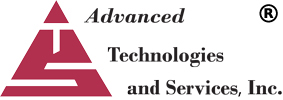Vertical Features Audit
Increase Revenue
Reduce Customer Service Calls
Improve Customer Experience
SimCall Lite – Vertical Features Audit
Telephone companies receive and process countless service requests on a daily basis to add or remove vertical features from a customer’s telephone service such as voice mail, call waiting, 3 way calling, etc. These requests are handled by adding/removing a USOC to the subscriber’s billing profile and provisioning the feature on their respective switch. Unfortunately, many times the situation arises where the customer receives the additional vertical features but is never billed for them. These errors often go by unnoticed and cause the telephone company to lose upwards of millions of dollars per year. On the other hand, a customer may ask for a feature to be removed but continue to be billed for it. This leads to increased cost, dissatisfied customers, and ultimately a higher churn rate.
In order to resolve these issues, ATS completes a line-by-line vertical feature comparison of switch translation data to corresponding billing files. First, ATS uses a module built into our SimCall tool that extracts the line level data from the switch. ATS then secures billing files from the carrier that defined which features their customers were being billed for. Upon completing the comparison, ATS is able to identify which customers were being under-billed/over-billed for vertical features.
Revenue Recovery (Under-Billing)
An under-billing error is identified when a customer is found to have a feature provisioned on the switch that they are not currently billed for. ATS consistently finds tens of thousands of errors for many of the features we test for. Typically a carrier will elect to contact the customer with a letter or phone call indicating what has been found and what the customer’s options are. Carriers have found take rates up to 70% as well as a tremendous up-selling opportunity where by many customers selected a larger feature bundle worth additional dollars. ATS is also able to assist in the process of automating the correction on errors found.
Preventative RA (Over-Billing)
ATS has completed extensive research to analyze the impact that overbilling has on call center cost as well as customer churn. The costs associated with fixing a feature related error can become rather high when you include the time of each employee that needs to be involved to fix the error. This often includes a customer service representative, a translator, and potentially a customer service manager. By proactively looking for overbilling errors and automating the fixing process, the costs associated with these errors decreases dramatically. Additionally, ATS research has found that overbilled customers are at a higher risk of churn.

